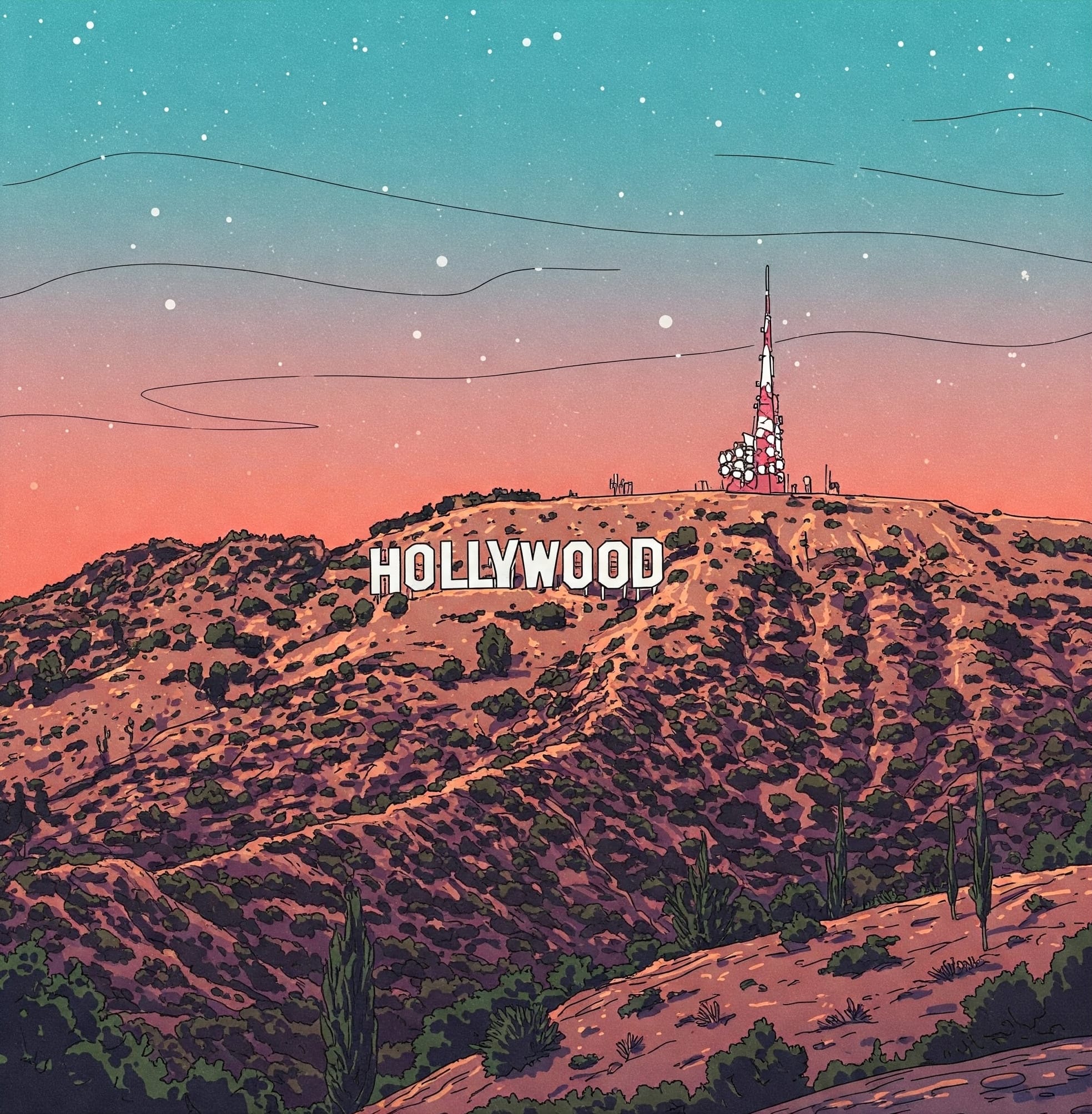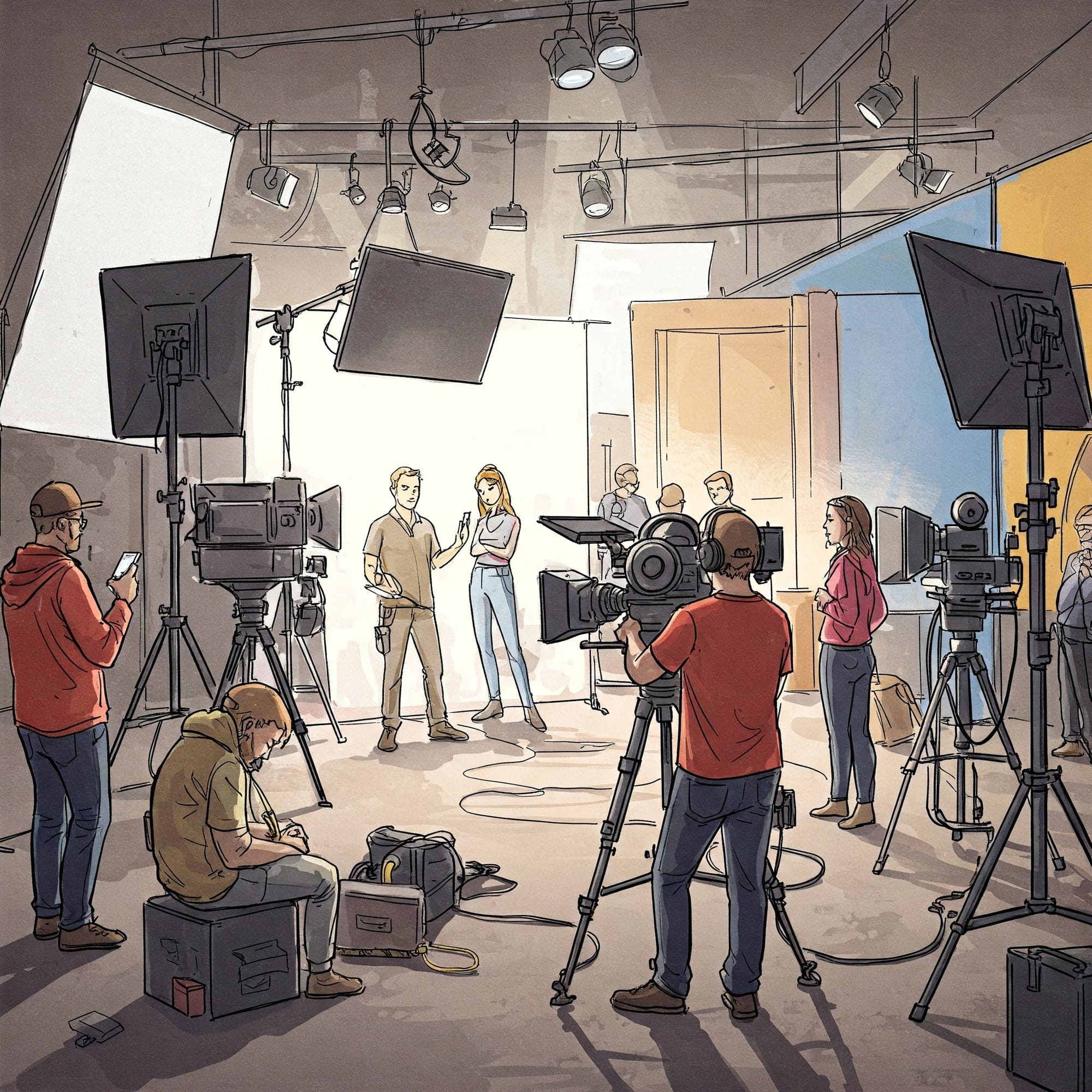Hollywood In a Laptop

In a quiet corner of a Los Angeles café, a young filmmaker opens her laptop. Sipping her coffee, she uploads a script and sets in motion an AI video generation application. Hours later, a feature-length film emerges—complete with stunning visuals, sound effects, and dynamic characters. No cameras, no crew, no multi-million-dollar budget. Just one person and a computer.
This scenario might sound fanciful, but the rapid advancement of diffusion-based video generation technologies suggests it’s close to reality. As artificial intelligence continues to advance, the traditional pillars of Hollywood filmmaking are poised for a seismic shift—one that could lead to the most significant technological disruption in business history.
At its core, a film is a digital file—a collection of pixels and sound waves arranged to tell a story. Traditionally, crafting this file requires an army of professionals: directors, actors, cinematographers, editors, and countless others. The production process is a logistical behemoth, often involving location scouting, set construction, costume design, and intricate coordination of schedules and resources. The cost? Frequently hundreds of millions of dollars. An expensive digital file.
Enter diffusion based video generation. This is a branch of AI that works by teaching a neural network to reverse a specific process: adding noise to video frames. During training, the network repeatedly corrupt video data by adding random noise over multiple steps, then learn to predict the reverse of this noise at each step. These systems can produce realistic visual content based on simple prompts. What would be the cost to generate a feature-length film? Hard to say for sure, but $50 to $5,000 is probably a realistic range, and it should trend rapidly to the lower end.
The implications are quite staggering. If one person with a laptop can produce entire TV shows and movies for $50—the whole industry will be turned on its head. The caravan of trucks and trailers, the mess of cables, the entourage of crew members—all could become relics of a bygone era.
In the current Hollywood paradigm, directing a big-budget film is a privilege reserved for a select few. The path to the director’s chair is steep and narrow, often requiring decades of dedication, networking, and a fair amount of luck.
Aspiring filmmakers must navigate a complex labyrinth where talent isn’t the only currency. Politics, networking prowess, and the ability to manage large teams and budgets often overshadow raw storytelling ability. Many visionary artists never get the chance to share their stories simply because they aren’t adept at climbing the industry’s greasy pole or lack the resources to produce their work independently.
With the ability to produce high-quality films using just a laptop, storytellers no longer need to secure massive budgets or convince studios to take a chance on them. They can focus on crafting compelling narratives without the overhead of traditional production logistics.
AI video generation will lead to an explosion of diverse content, reflecting a broader range of experiences and perspectives. Stories that would never have made it past a traditional studio’s gatekeepers can find their audience. Niche genres, experimental formats, and culturally specific narratives will flourish, enriching the global media landscape.

Although consumers and filmmakers will benefit immensely, this shift poses a mortal threat to the established order. Major studios, built on the capital-intensive model of blockbuster filmmaking, could find their business models upended. If theaters and streaming services can access a plethora of high-quality films produced at a fraction of the cost, producing big-budget films likely becomes economically impossible—the returns won’t justify it. Forcing the industry to adopt the new process.
The potential for pain here can’t be overstated. Behind every film and TV show are thousands of skilled workers whose names you might never see in the credits, but whose expertise makes Hollywood magic possible. The key grip who knows how to rig lights safely in pouring rain, the location scout who can find the perfect backdrop after years of building trust with property owners, the stunt performer who sacrifices their body to bring heart-pounding action to life. These unsung professionals are the backbone of every production—and many of their roles could soon be diminished or disappear entirely.
The impact of this technology will extend beyond production to the venues that showcase films: movie theaters. The communal experience of watching a film on the big screen has been a staple of cinema for over a century. Now, as AI makes it possible to generate high-quality, personalized films at home, theaters sit at a crossroads. Streaming has already emptied many seats; a flood of AI-generated content could empty more.
Alternatively, cheaper distribution could give new life to theaters. With more freedom to choose their content, cinemas could become true community spaces. They might showcase local films, experiment with niche genres, or adapt their lineup more rapidly to match audience interests. Breaking free from Hollywood’s control, theaters could also embrace immersive experiences, like interactive screenings or VR events, offering a unique night out to draw people together.
It’s hard to find a historical analogy for this level of technological disruption. No other innovation has taken something that costs $200 million and collapsed it down to $200 in one leap. It’s like building skyscrapers for the price of a bicycle. Perhaps the closest parallel is the digitization of newspapers and magazines into websites.
For decades, the print industry relied on a colossal infrastructure: physical cut-and-paste layouts, massive printing presses, fleets of delivery trucks, and sprawling distribution networks. Producing a daily newspaper or monthly magazine demanded significant labor, resources, and coordination.
The internet and digital publishing revolutionized this process. Suddenly, content could be created, edited, and distributed entirely online. The need for physical printing vanished almost overnight. Journalists and editors transitioned from arranging articles on physical pages to designing layouts on digital platforms. Barriers to entry fell, enabling independent bloggers and writers to reach global audiences without the backing of major publishing houses.
This democratization of print media came at a cost. Traditional business models collapsed, leading to declining revenues, staff reductions, and the closure of many established publications. The digitization of print offers a glimpse into the kind of upheaval Hollywood could face in the coming years.

As with any powerful technology, diffusion-based video generation carries a dark side. The potential for misuse is significant, particularly with deepfakes—realistic digital forgeries that can depict individuals in scenarios they were never part of. Malicious actors could generate videos placing people in compromising or horrifying situations, leading to harassment, blackmail, or reputational damage.
Beyond individual harm, this technology raises the specter of Orwellian control. AI-generated video could fabricate evidence against political opponents, disseminate propaganda, or rewrite historical narratives, echoing the dystopian manipulation of truth envisioned in 1984.
While safeguards like watermarks and detection algorithms are being developed, they often trail behind the rapid pace of technological advancement. The challenge lies in ensuring this groundbreaking technology remains a force for creativity rather than a weapon of oppression and manipulation.
Looking further into the future, where could all this go? It’s not impossible to imagine a world where an AI model can generate the equivalent of an entire season of a complex show like Game of Thrones in minutes, without any human involvement at all. Imaginary worlds and stories on demand.
Another intriguing possibility is extreme personalization. Imagine watching a film where you are the protagonist, or where the storyline adapts in real-time to your emotional responses. AI could tailor narratives to individual preferences, creating a deeply personal connection between the viewer and the content.
The implications of this technology could extend beyond entertainment. Scientists might harness similar tools to simulate complex phenomena, modeling everything from climate systems to biological processes with unprecedented detail.
Yet despite the astonishing capabilities of AI, there remains an intangible quality to human creativity and theatrical performances. The nuances of human emotion, the spontaneity of improvisation, and the lived experiences that inform authentic characters might be challenging for machines to replicate.
Audiences may find themselves craving the imperfections and unpredictability that come with human-made art. The value of the human touch could increase, making works created by people more treasured in a landscape flooded with AI-generated content.
The potential for diffusion-based video generation to disrupt Hollywood is immense. It promises to democratize filmmaking, reduce costs, and unleash a torrent of creativity. Yet it also threatens to destroy cherished professions, challenge legal systems, and blur the lines between reality and fiction.
From campfires to cinemas, storytelling is a cornerstone of human culture. Hollywood is a large and important industry, one that touches people across the globe. It’s a source of American influence and prestige. And it’s all about to be turned upside down.

















